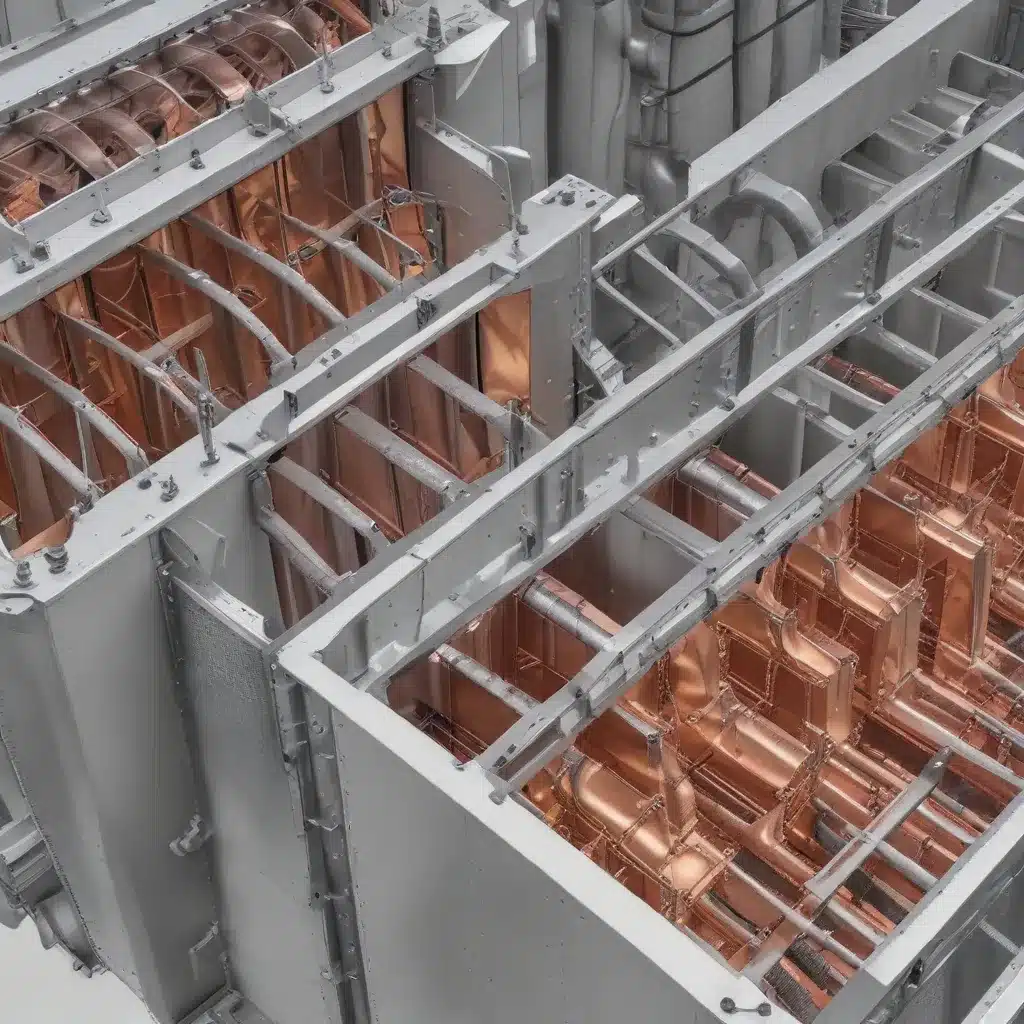
The Importance of Flow Uniformity in Air-Cooled Heat Exchangers
Air-cooled heat exchangers are widely used across various industries, from power generation and petrochemical processing to HVAC systems and industrial manufacturing. These heat transfer devices play a crucial role in efficiently dissipating heat and maintaining optimal operating temperatures for a wide range of applications. However, achieving consistent and uniform airflow through the heat exchanger’s finned tubes or plates is a common challenge that can significantly impact thermal performance and energy efficiency.
Uneven airflow distribution can lead to localized hot spots, reduced heat transfer rates, and accelerated fouling or corrosion of the heat exchanger components. This, in turn, can result in decreased overall efficiency, higher energy consumption, and potential equipment failures. Therefore, understanding and optimizing the airflow characteristics within air-cooled heat exchangers is of paramount importance for engineers and technicians responsible for their design, operation, and maintenance.
Leveraging Numerical Simulations for Airflow Optimization
Advancements in computational fluid dynamics (CFD) have enabled heat exchanger designers to utilize advanced numerical simulations to gain deeper insights into the complex airflow patterns and their impact on thermal performance. By creating detailed 3D models of the heat exchanger geometry, researchers can employ powerful CFD tools to simulate the airflow and heat transfer processes, allowing them to identify flow obstructions, recirculation zones, and uneven distribution patterns.
One such study, published in the journal Energies, focused on improving the flow uniformity in the steam generator of a sodium-cooled fast reactor (SFR) using a perforated plate design. The researchers conducted a comprehensive numerical investigation to systematically design the perforated plate and analyze its impact on the flow distribution across the multiple channels in the heat exchanger.
Through their CFD simulations, the team was able to optimize the size, shape, and positioning of the perforations to achieve a more uniform flow over the 33 × 66 channels in the heat exchanger model. The numerical results showed a significant improvement in flow uniformity, with a slight increase in pressure drop – a trade-off that is often necessary to balance performance and energy consumption.
Experimental Validation: Bridging Simulation and Real-World Performance
While numerical simulations provide valuable insights, it is crucial to validate the predictions through carefully designed experiments to ensure the accuracy and applicability of the findings. In the same study, the researchers built a 1/4-scale experimental model of the heat exchanger unit and performed planar particle image velocimetry (PIV) measurements to capture the velocity profiles at the inlet and outlet regions.
The experimental velocity data was then compared with the numerical simulation results, and the two sets of findings were found to be in good agreement. This validation process not only strengthened the confidence in the CFD model’s ability to capture the complex flow phenomena but also provided valuable insights into the practical implementation of the perforated plate design.
The experimental results corroborated the numerical predictions, demonstrating that the perforated plate effectively improved the flow uniformity over the multiple channels, albeit with a slight increase in pressure drop. This trade-off is often acceptable, as the improved flow distribution can lead to enhanced heat transfer performance and reduced risks of localized hot spots or uneven thermal stresses within the heat exchanger.
Combining Simulation and Experimental Approaches for Optimal Design
The integration of advanced numerical simulations and experimental validation is a powerful approach for optimizing the design and performance of air-cooled heat exchangers. By leveraging CFD tools, heat exchanger designers can explore a wide range of design parameters, such as fin geometries, tube arrangements, and flow obstructions, to identify the most effective strategies for achieving uniform airflow distribution.
These numerical findings can then be validated through targeted experiments, which not only confirm the simulation predictions but also provide valuable insights into the real-world behavior and operational characteristics of the heat exchanger. This combined approach allows engineers to refine their designs, account for practical considerations, and ultimately develop more efficient and reliable air-cooled heat exchanger systems.
Practical Applications and Maintenance Considerations
The insights gained from the integration of numerical simulations and experimental validation can be applied to a wide range of air-cooled heat exchanger applications, from power generation and industrial processing to commercial HVAC systems and automotive cooling. By understanding the critical role of flow uniformity, heat exchanger designers can implement strategies such as:
- Optimizing inlet and outlet plenum designs to ensure even airflow distribution
- Incorporating flow-guiding devices, such as perforated plates or baffles, to mitigate flow obstructions
- Selecting appropriate fin and tube geometries that promote uniform airflow
- Incorporating corrosion-resistant materials and coatings to maintain optimal heat transfer performance over time
Furthermore, the experimental validation of these design strategies can inform maintenance practices, helping plant operators and technicians identify potential issues, such as fouling or corrosion, that could lead to uneven airflow and reduced thermal efficiency. By regularly monitoring the heat exchanger’s performance and inspecting for any flow distribution anomalies, operators can implement timely maintenance measures to ensure consistent and reliable operation.
Conclusion: Unlocking the Full Potential of Air-Cooled Heat Exchangers
The integration of advanced numerical simulations and experimental validation is a powerful approach for improving the design and performance of air-cooled heat exchangers. By leveraging the insights gained from CFD modeling and targeted experiments, engineers can optimize airflow distribution, enhance thermal efficiency, and develop more reliable and cost-effective heat transfer solutions across a wide range of industrial and commercial applications.
As the demand for energy-efficient and environmentally-friendly technologies continues to grow, the importance of optimizing air-cooled heat exchanger performance will only become more critical. By embracing the synergistic combination of numerical simulations and experimental validation, the Air Cooled Heat Exchangers community can unlock the full potential of these versatile and essential heat transfer devices, driving innovation and advancing the field of thermal management.

